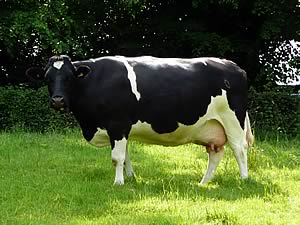Type the name of the breed you're looking for below
[wpdreams_ajaxsearchlite] Don't see the breed your're looking for? Click here and let us know!
Friesian cattle
| Place of Origin | Netherlands |
| Origin | The exact origins of the breed are difficult to determine but it is known that in the 18th century, herds of small black-and-white cattle were brought into northern Holland and Friesland from northern Jutland to replace animals that had fallen victim to disease and flooding. These animals were crossed with the existing Dutch cattle and formed the basis of the Friesian. Before the establishment of the Netherlands herdbook in 1873 and the Friesland herdbook in 1879, both black-pied and red-pied animals were maintained separately. The preference for black-pied cattle, particularly in the United States, led to the further segregation of red-pied animals and presently this colour variation only exists in small number in the Netherlands. Production levels of this breed declined during the 1950's when excessive emphasis was placed on correct colour pattern. During the 1970's Holsteins were imported from the United States and used to improved the milk production. This resulted in larger animals with a more pronounced dairy characteristics. The mixing of these two breeds is such that now many Friesians are 25% to 75% Holstein. The modern Friesian is pre-eminently a grazing animal, well able to sustain itself over many lactations, on both low lying and upland grassland, being developed by selective breeding over the last 100 years. Some outstanding examples of the breed have 12 to 15 lactations to their credit, emphasising their inherent natural fecundity. In response to demand, protein percentages have been raised across the breed and herd protein levels of 3.4% to 3.5% are not uncommon. As the Friesian is mainly a dairy breed, surplus male animals are highly regarded, as they are producers of high quality lean meat, whether crossed with a beef breed or not. Beef cross heifers have long been sought after as the ideal suckler dam replacement. |
| Purpose | Dairy and Meat. |
| Appearance | The Friesian can be one of two coat colour types, white with black patches (the common colour) or white with red patches. They are very similar in size and confirmation to the Holstein. |
| Horns | Polled (hornless) |



